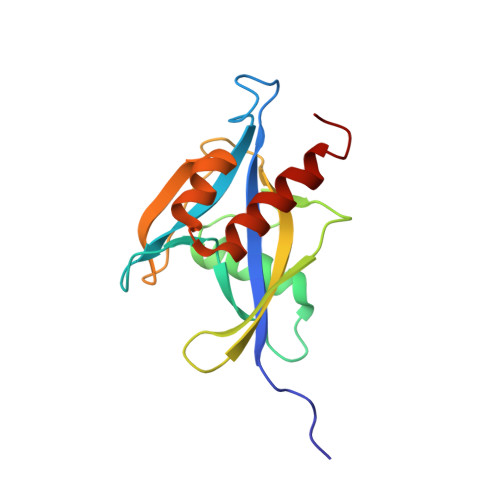Structure and Substrate-binding Mechanism of Human Ap4A Hydrolase
Swarbrick, J.D., Buyya, S., Gunawardana, D., Gayler, K.R., McLennan, A.G., Gooley, P.R.(2005) J Biol Chem 280: 8471-8481
- PubMed: 15596429
- DOI: https://doi.org/10.1074/jbc.M412318200
- Primary Citation of Related Structures:
1XSA, 1XSB, 1XSC - PubMed Abstract:
Asymmetric diadenosine 5',5'''-P(1),P(4)-tetraphosphate (Ap(4)A) hydrolases play a major role in maintaining homeostasis by cleaving the metabolite diadenosine tetraphosphate (Ap(4)A) back into ATP and AMP. The NMR solution structures of the 17-kDa human asymmetric Ap(4)A hydrolase have been solved in both the presence and absence of the product ATP. The adenine moiety of the nucleotide predominantly binds in a ring stacking arrangement equivalent to that observed in the x-ray structure of the homologue from Caenorhabditis elegans. The binding site is, however, markedly divergent to that observed in the plant/pathogenic bacteria class of enzymes, opening avenues for the exploration of specific therapeutics. Binding of ATP induces substantial conformational and dynamic changes that were not observed in the C. elegans structure. In contrast to the C. elegans homologue, important side chains that play a major role in substrate binding do not have to reorient to accommodate the ligand. This may have important implications in the mechanism of substrate recognition in this class of enzymes.
Organizational Affiliation:
Department of Biochemistry and Molecular Biology, the University of Melbourne, Parkville, Victoria 3010, Australia.














